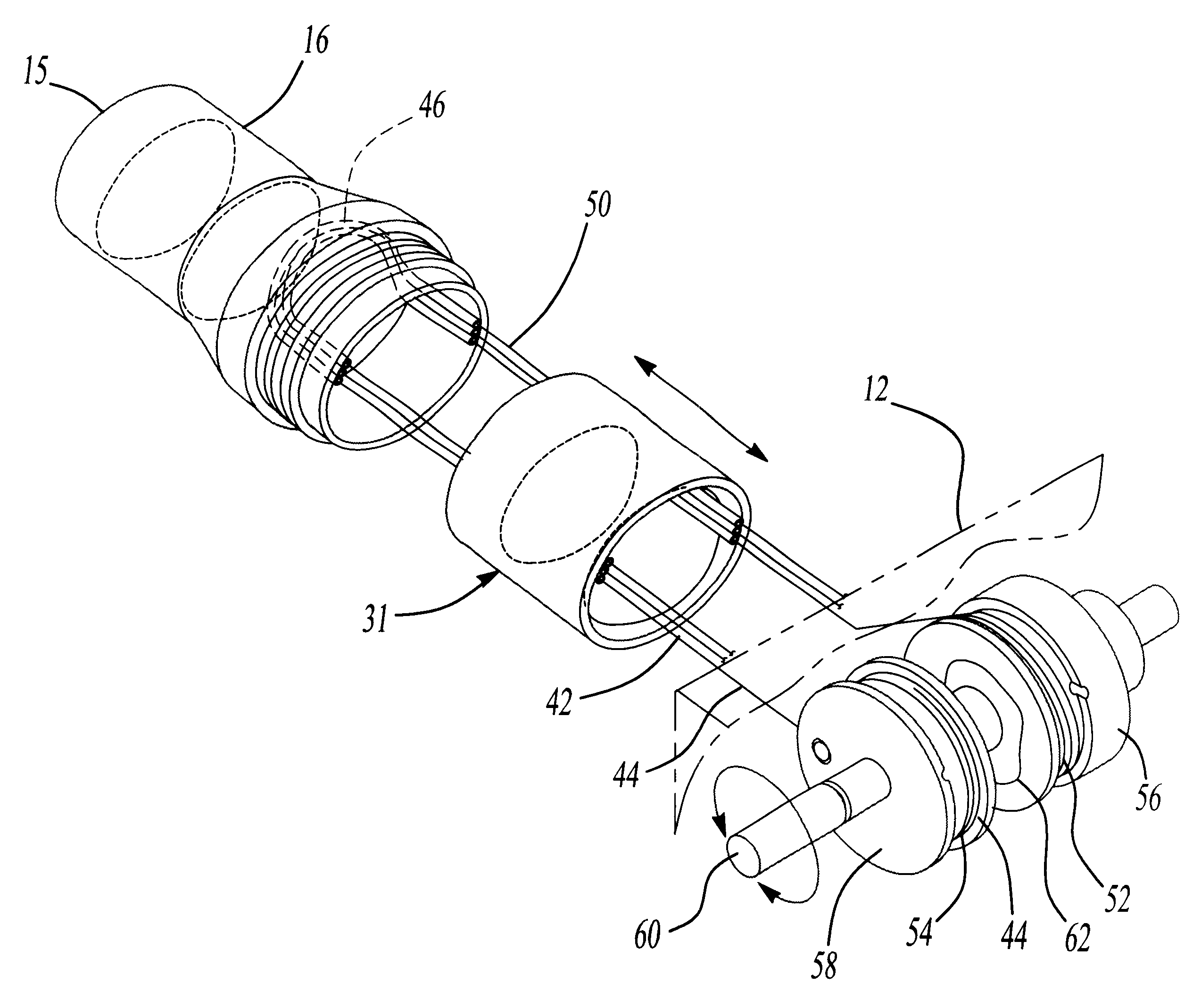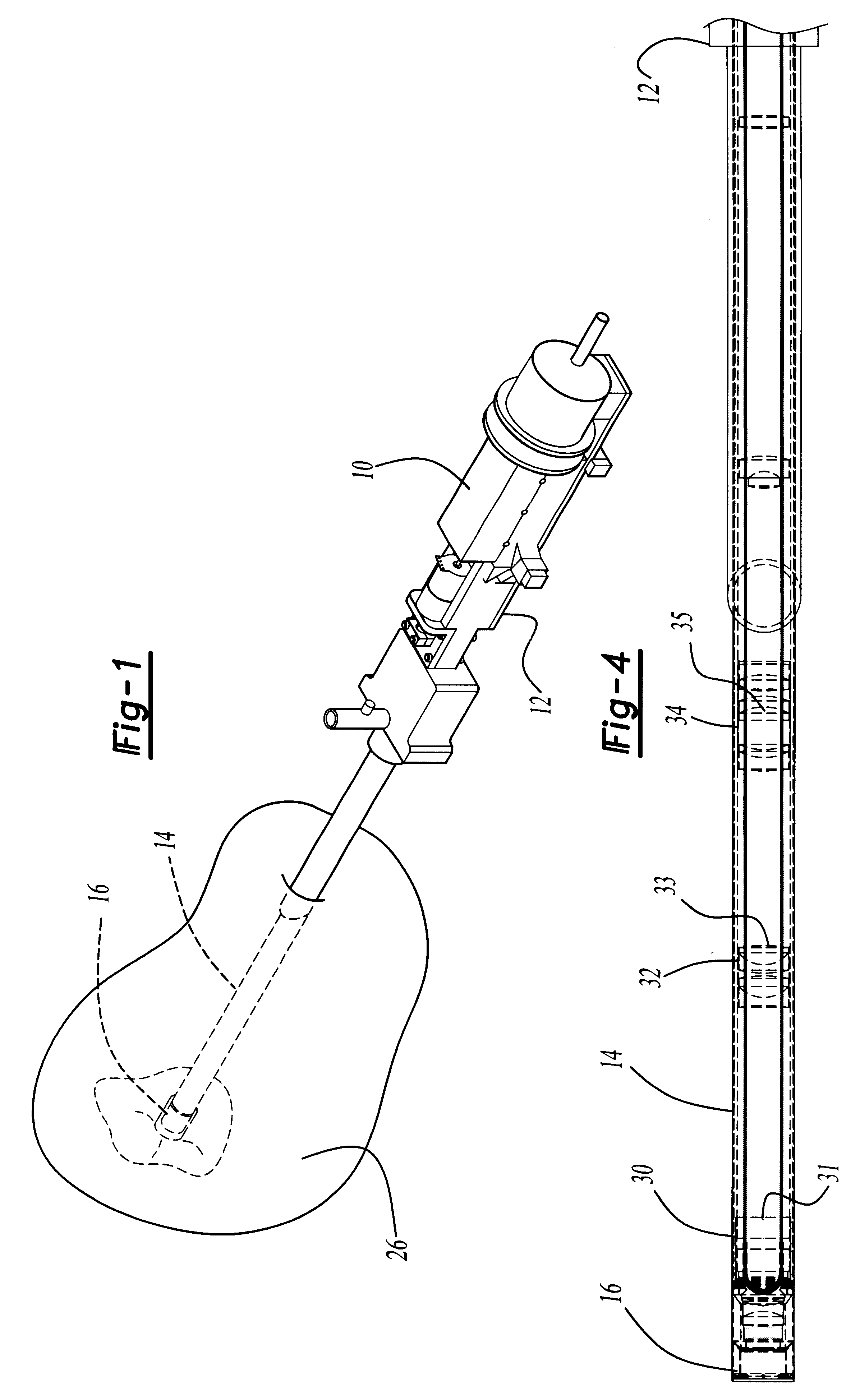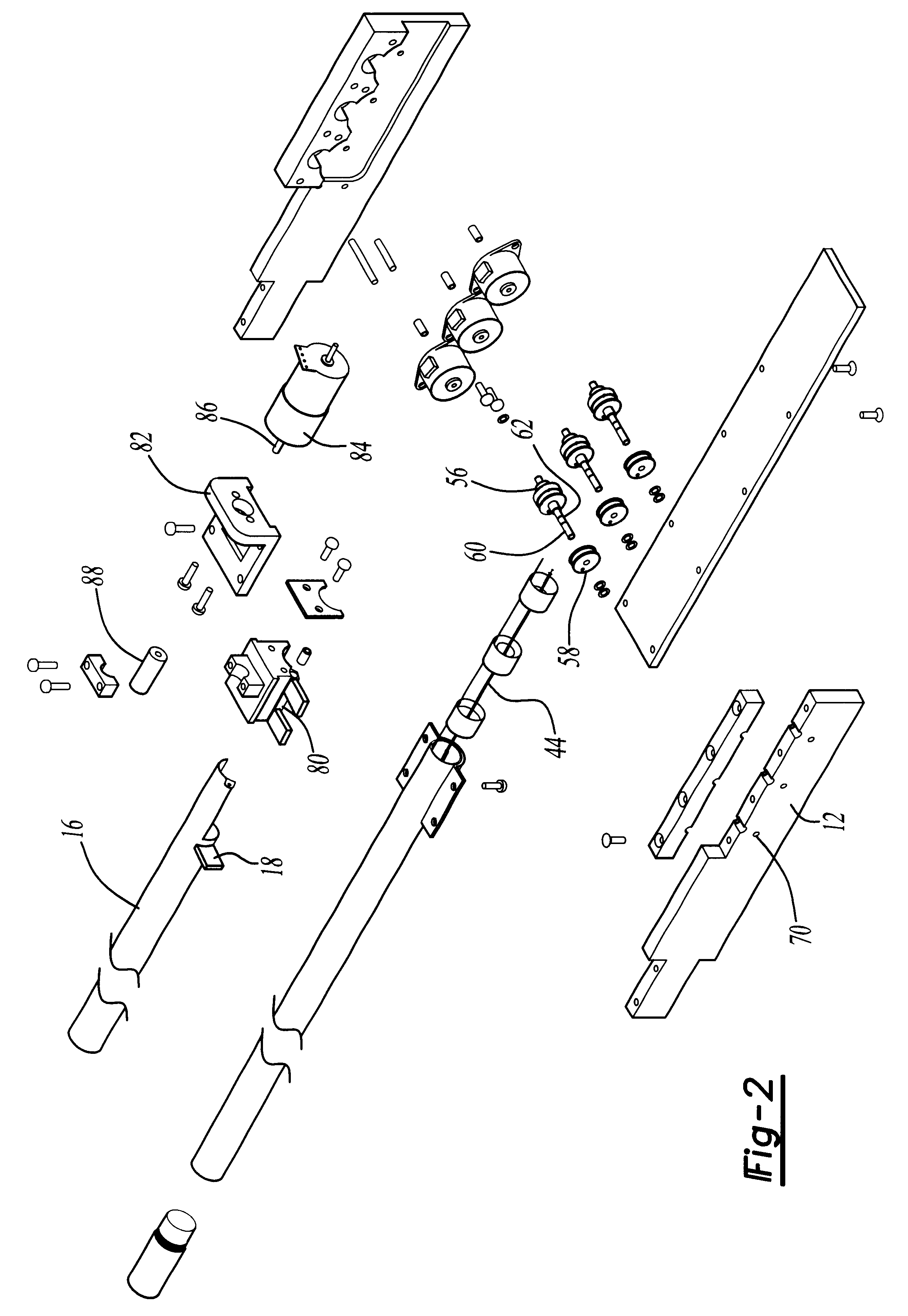Endoscope
a technology of endoscope and endoscope body, which is applied in the field of medical instruments, can solve the problems of insufficient macroscopic magnification of the previously known endoscope, insufficient examination of the organ tissue in sufficient detail to determine, and unnecessary harm and even loss of organ function to the patient, so as to prevent unnecessary biopsies and/or organ removal, the effect of enhancing the imaging of microscopic images
- Summary
- Abstract
- Description
- Claims
- Application Information
AI Technical Summary
Benefits of technology
Problems solved by technology
Method used
Image
Examples
Embodiment Construction
With reference first to FIGS. 1 and 3, a first preferred embodiment of the endoscope 10 of the present invention is there shown and comprises a housing 12 dimensioned to be hand held by medical personnel. An elongated lens tube 14 is secured to and extends outwardly from the housing 12. An elongated tubular stage 16 is open at one end and has a transparent window 20 (FIG. 6) disposed across its opposite end. The stage 16, furthermore, is dimensioned to be slidably received over the free end 15 of the lens tube 14 and detachably secured to the housing 12 by a bayonet coupling 18 (FIG. 2). Furthermore, with the stage 16 secured to the housing 12, the stage and lens tube are adapted for insertion into a body cavity 26.
With reference now to FIGS. 3, 4 and 8, the endoscope 10 further comprises at least one, and preferably three moveable lens groups 30, 32 and 34. Each lens group 30, 32 and 34 is secured within its own support tube 31, 33 and 35, respectively, and these lens support tubes...
PUM
 Login to View More
Login to View More Abstract
Description
Claims
Application Information
 Login to View More
Login to View More - R&D
- Intellectual Property
- Life Sciences
- Materials
- Tech Scout
- Unparalleled Data Quality
- Higher Quality Content
- 60% Fewer Hallucinations
Browse by: Latest US Patents, China's latest patents, Technical Efficacy Thesaurus, Application Domain, Technology Topic, Popular Technical Reports.
© 2025 PatSnap. All rights reserved.Legal|Privacy policy|Modern Slavery Act Transparency Statement|Sitemap|About US| Contact US: help@patsnap.com



